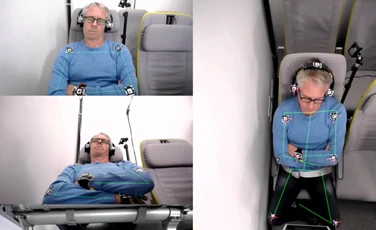
Motion Analysis for the Identification of Seating Comfort
Development of a Recording and Analysis Tool
Project Justification
Sitting is a dominant posture in modern Western societies – particularly in the contexts of work, transportation, and domestic environments. A comfortable seating experience in these settings contributes significantly to well-being, concentration, and long-term health.
To optimize seating design, discomfort must be assessed objectively. For this purpose, a range of behavioral and psychophysiological methods are being tested and further developed. These approaches aim to quantify discomfort in real time, enabling data-driven improvements in ergonomics and user-centered seat design.
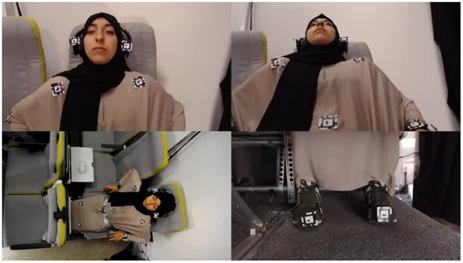

Experimental setup from four camera perspectives (left) and exemplary posture and motion detection (right)
Our Approach
The core objective of this approach is to capture physical discomfort through motion analysis using accelerometry and computer vision, complemented by the detection of affective signals related to annoyance, stress, and pain.
To generate reliable training data, a cabin mockup equipped with various ergonomic features was set up. A total of 75 participants completed a standardized protocol involving prototypical seating activities. During these sessions, multiple sensor data streams were continuously recorded.
The resulting dataset comprised approximately 2,000 distinct postures and around 15,000 labeled ground truth entries. This corpus was used to train recurrent neural networks capable of recognizing discomfort-related patterns. In addition, a user-friendly front-end dashboard was developed to visualize discomfort metrics and support ergonomic evaluation in applied settings.
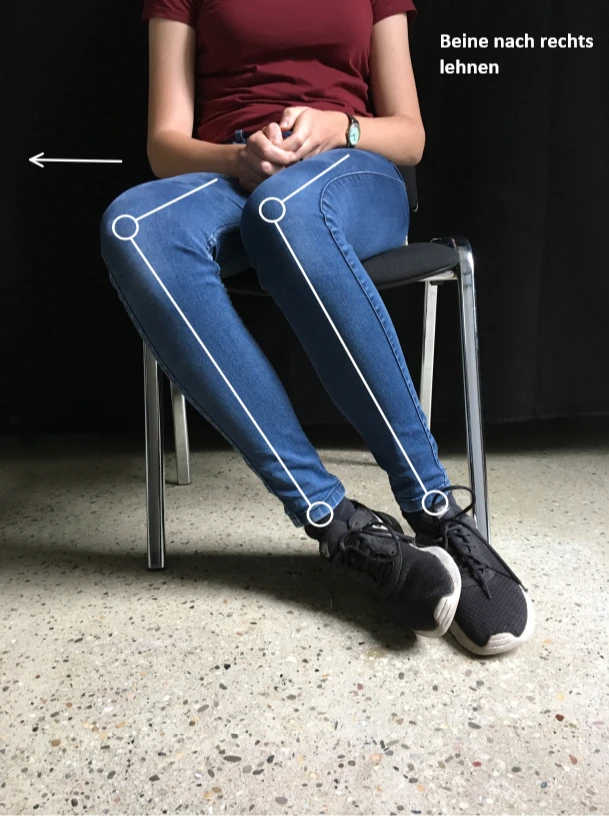
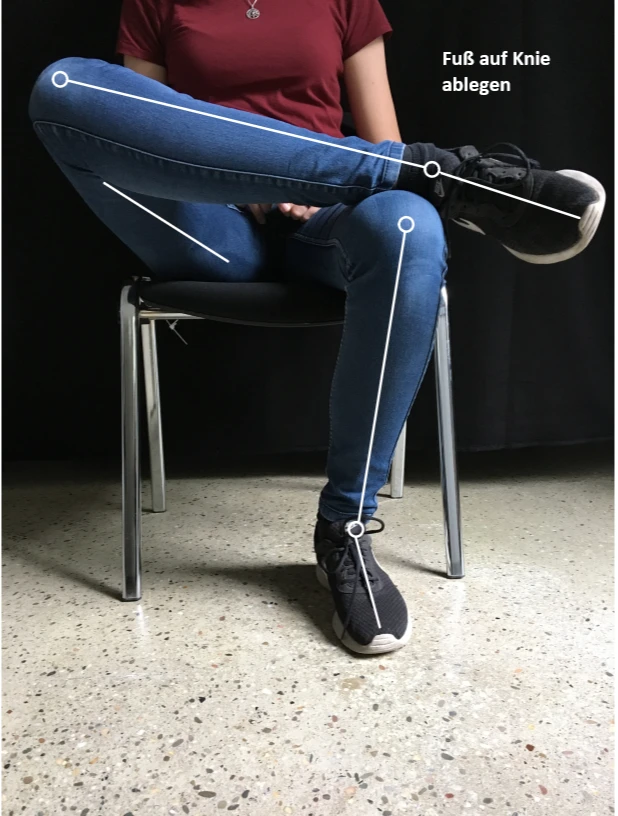
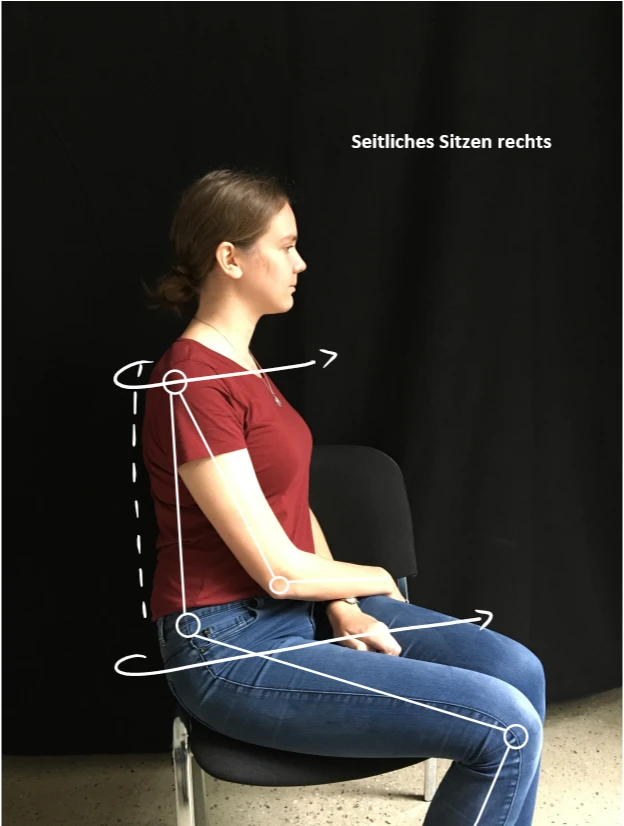
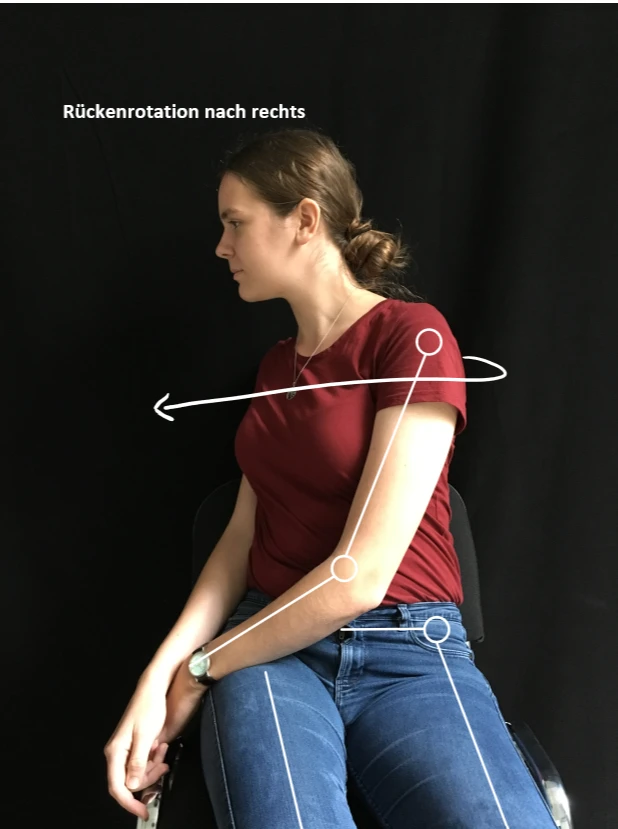
Exemplary movements for the detection of seating comfort
Insights and Outcomes
The developed system features an offline reporting tool that documents detected seating postures and the corresponding levels of inferred discomfort. Integrating a camera array significantly enhanced the system’s robustness and accuracy in posture recognition and discomfort estimation.
As a result, this multifactorial system offers a reliable basis for evaluating and optimizing the ergonomic quality and user experience of seating solutions across various application domains.
Example of a discomfort event incl. ECG data and accelerometry data of the hands and feet
